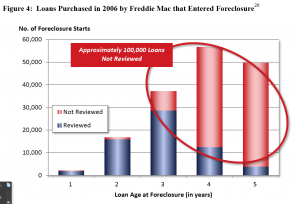Is Chinese Elite Looting More Newsworthy than Middle Eastern–or US–Looting?
NYT has a really good article today on how the family of Chinese Prime Minister Wen Jiabao has gotten enormously wealthy while he’s been in power. The Chinese government has already started censoring the story itself and discussions of it.
And while I applaud NYT’s coverage of the corruption of the Chinese elite, I was left wondering whether NYT would print the equivalent story on Middle Eastern dictators or–even more unlikely–American elites.
While there has been some coverage of how Hosni Mubarak, Moammar Qaddafi, Ali Abdullah Saleh, or Zine El Abindine Ben Ali looted their countries of billions now that they’ve fallen, one of the only times we’ve heard about Saudi looting came after Riggs Bank got busted.
And while we’ve had reports on Countrywide’s VIP program and the general process by which members of Congress get enormously wealthy on our dime as well as stories focused on those (like Maxine Waters), we rarely see maps like the one NYT drew of the business connections involved.
Partly, I wonder whether the US is just better at hiding these connections. Some of this kind of work would stumble on America’s shell corporations, for example.
In the case of Mr. Wen’s mother, The Times calculated her stake in Ping An — valued at $120 million in 2007 — by examining public records and government-issued identity cards, and by following the ownership trail to three Chinese investment entities. The name recorded on his mother’s shares was Taihong, a holding company registered in Tianjin, the prime minister’s hometown.
The apparent efforts to conceal the wealth reflect the highly charged politics surrounding the country’s ruling elite, many of whom are also enormously wealthy but reluctant to draw attention to their riches. When Bloomberg News reported in June that the extended family of Vice President Xi Jinping, set to become China’s next president, had amassed hundreds of millions of dollars in assets, the Chinese government blocked access inside the country to the Bloomberg Web site.
“In the senior leadership, there’s no family that doesn’t have these problems,” said a former government colleague of Wen Jiabao who has known him for more than 20 years and who spoke on the condition of anonymity. “His enemies are intentionally trying to smear him by letting this leak out.”
And partly it may be lack of self-awareness. NYT complains, for example, that Chinese disclosure laws don’t apply to extended relatives.
In the winter of 2007, just before he began his second term as prime minister, Wen Jiabao called for new measures to fight corruption, particularly among high-ranking officials.
“Leaders at all levels of government should take the lead in the antigraft drive,” he told a gathering of high-level party members in Beijing. “They should strictly ensure that their family members, friends and close subordinates do not abuse government influence.”
The speech was consistent with the prime minister’s earlier drive to toughen disclosure rules for public servants, and to require senior officials to reveal their family assets.
Whether Mr. Wen has made such disclosures for his own family is unclear, since the Communist Party does not release such information. Even so, many of the holdings found by The Times would not need to be disclosed under the rules since they are not held in the name of the prime minister’s immediate family — his wife, son and daughter.
Eighty percent of the $2.7 billion in assets identified in The Times’s investigation and verified by the outside auditors were held by, among others, the prime minister’s mother, his younger brother, two brothers-in-law, a sister-in-law, daughter-in-law and the parents of his son’s wife, none of whom is subject to party disclosure rules.
But when Congress finally passed a bill cracking down on insider trading this year, it didn’t even cover the spouses of members of Congress and we’re exempting some Executive Branch members on national security grounds.
Maybe I’m being churlish. But I really wonder if such a superb article would come out to expose graft of our allies that got deposited into American banks. And I wish we saw more of this kind of reporting about our own corrupt elite.
In somewhat related news, Silvio Berlusconi got sentenced to four years for tax fraud today (though appeals will probably save him from jail time). And we still haven’t seen Mitt Romney’s tax returns.

